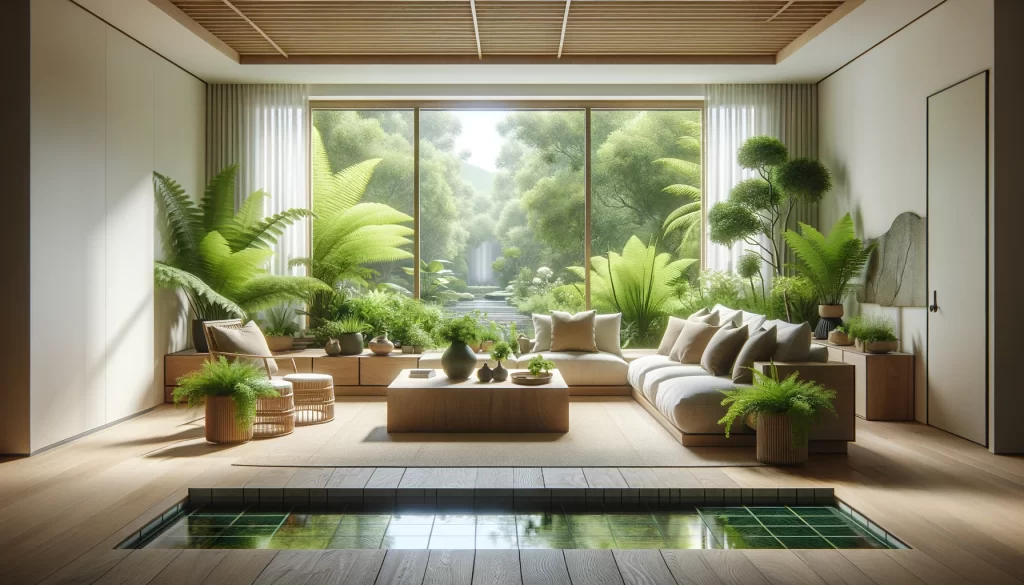Bring Nature Home: The Power of Biophilic Design

In recent years, the principles of biophilic design have been increasingly embraced by architects and interior designers. This design philosophy is about creating a connection between inhabitants and the natural environment, enhancing both aesthetic appeal and well-being.
Table of Contents
Key Takeaways
| Understanding Biophilic Design | Core Strategies | Practical Tips | Benefits |
|---|---|---|---|
| Principles and benefits | Visual and material connections, light and space, natural patterns | Indoor plants, water features, natural light, natural materials, transitional spaces | Enhanced well-being, mental health, aesthetic appeal |
Understanding Biophilic Design
Biophilic design goes beyond adding a couple of potted plants on your windowsill. It’s about incorporating elements such as natural light, vegetation, natural materials, and designs that mimic the outdoors into the modern built environment—aiming to strengthen the human-nature connection within living spaces.
Core Strategies for Implementing Biophilic Design
- Visual Connections with Nature: Think large windows or botanical wallpapers that bring the outside in.
- Material Connections to Nature: Utilize natural materials like wood, stone, and bamboo.
- Light and Space: Maximizing natural light and creating open, airy spaces are key.
- Incorporating Natural Patterns: Implement textiles or artworks that mimic natural patterns.
Practical Tips for Home Integration
- Indoor Plants and Green Walls: An easy start to biophilic design.
- Water Features: Consider small indoor waterfalls or fountains.
- Natural Light Maximization: Use window treatments and mirror placements to enhance light.
- Use of Natural Materials: Integrate furniture, flooring, and decor with natural elements.
- Outdoor-Indoor Transitional Spaces: Think of patios or balconies that bridge your indoor and outdoor spaces.
Benefits of Biophilic Design
- Enhanced Physical Well-Being: Exposure to natural elements can reduce stress levels and improve overall health.
- Mental Health Benefits: Spaces with natural light and greenery can boost mood and productivity.
- Aesthetic Appeal: It creates visually interesting and beautiful spaces.
Seamless Nature Integration: Insights and Inspiration
Consider these examples and sources for more in-depth exploration into enhancing your home with biophilic design:
- Natural Material Furniture: Specific furniture pieces crafted from natural materials like wood not only create a cozy atmosphere but also reinforce our connection with nature. Their intrinsic textures and tones can bring warmth and authenticity to any space.
- Indoor Plant Inspirations: From small succulents to towering indoor trees, plants are an essential component of biophilic design. They purify the air, reduce stress, and can even help organize your space naturally by serving as living partitions.
- Maximizing Natural Light: Making the most of the sunlight your home gets can significantly affect its feel and your mood. Consider mirror placements and skylights to brighten up your living areas.
By adopting biophilic design principles, you not only create a more aesthetically pleasing space but also foster a healthier and happier living environment. To understand how these elements fit into a sustainable living approach, explore our comprehensive guide on sustainable living practices.\
For a deeper understanding of biophilic design principles and how they can transform your space, consider checking out the insights from Terrapin Bright Green, a leader in biophilic design research.